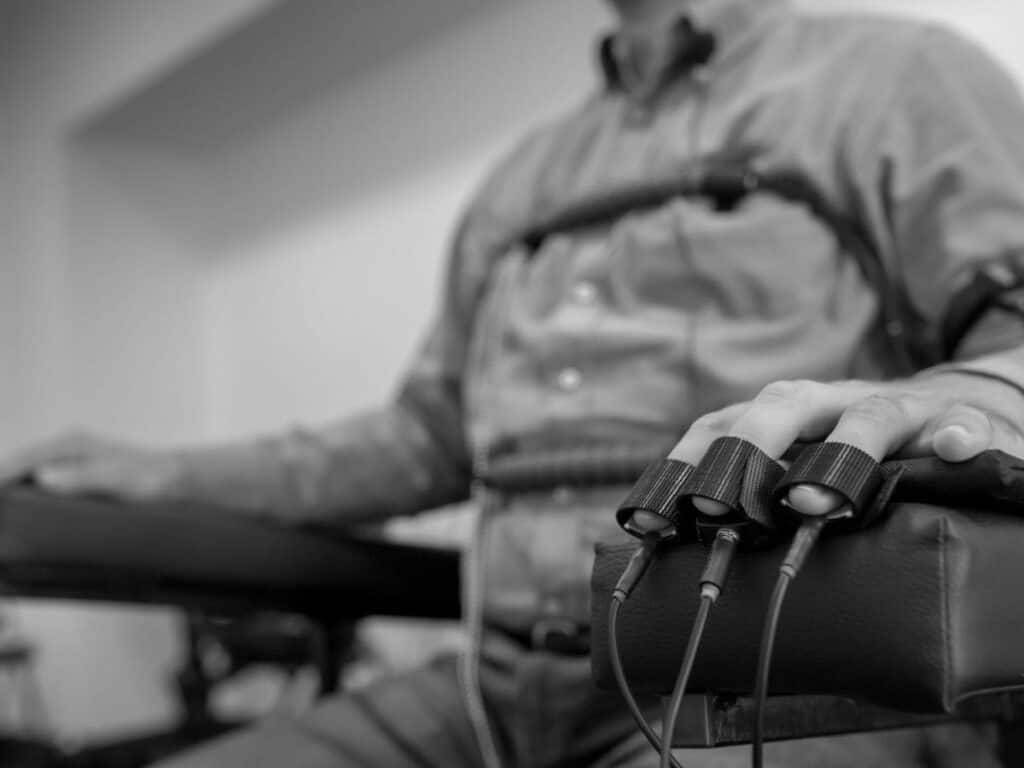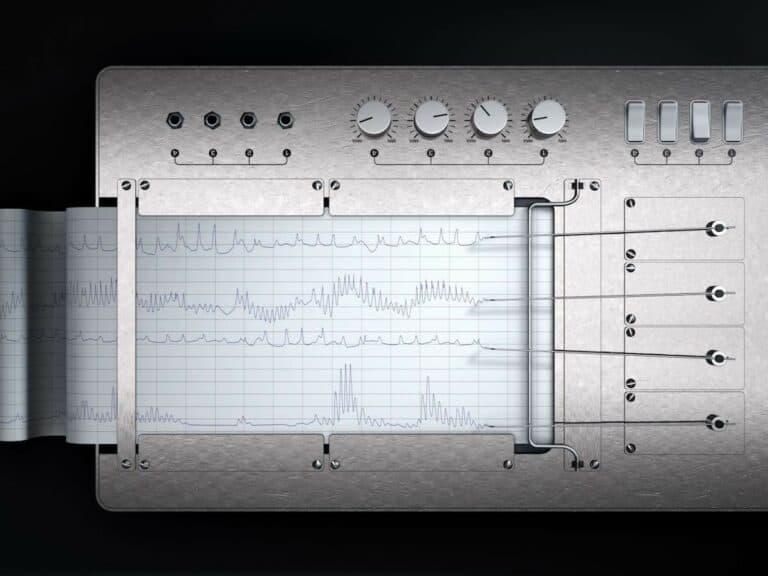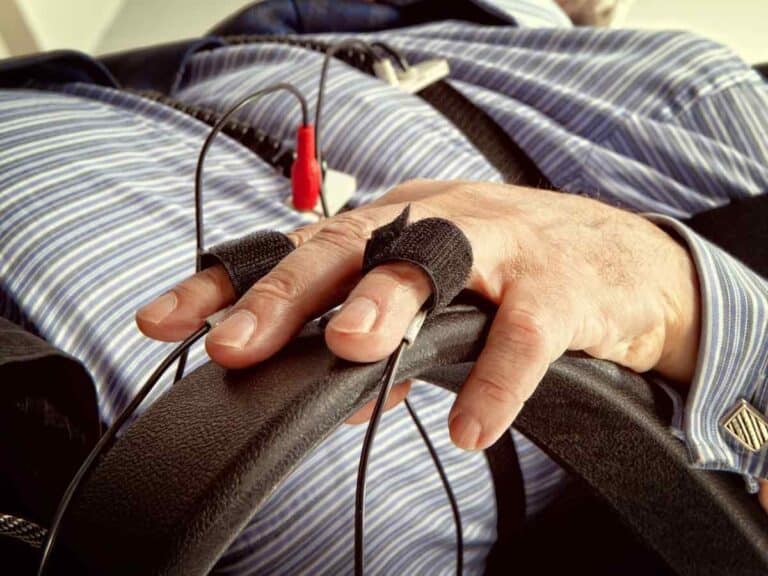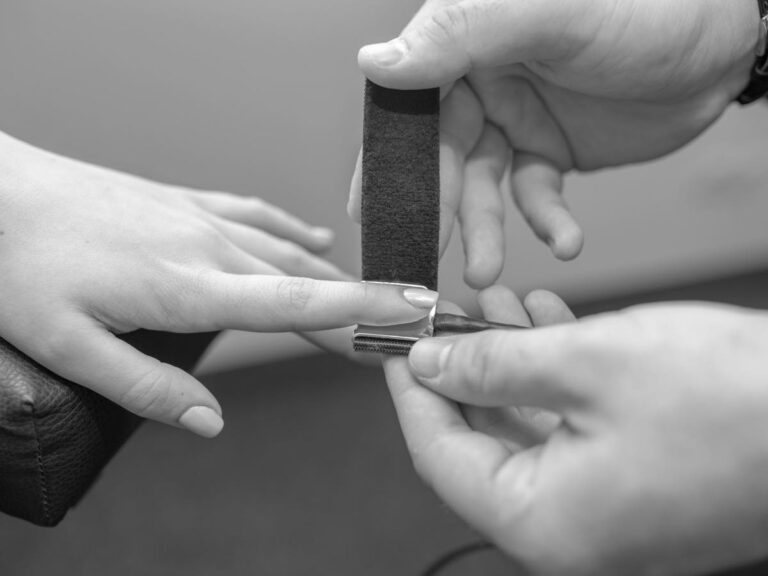How Does a Polygraph Work
Anyone from a law enforcement officer to a court judge and from an investigator to a hiring manager can ask you to take a lie detector. And whether you are on a court trial or applying for a government job, you may be wondering how a polygraph can tell whether you are telling the truth or lying.
A polygraph works by measuring any physiologic changes in the body such as blood pressure, heart rate, breathing rate and perspiration. Since lying results in the increase in the said bodily functions, a lie detector considers them as indicators of deceit. As such, a polygraph can be used in various contexts, including interrogation, court trial and employment screening.
In this post, I will talk about the science behind polygraphs such as how it is able to tell truthfulness or deceitfulness.
You will also come across some of the most important matters about a lie detector and polygraphy so that you can make a more informed decision whether you are being accused of something or applying for your dream job in the government or private sector.

How Many Sensors Does a Polygraph Have?
A polygraph machine can have anywhere from 4 to 6 sensors, depending on the model. The most basic lie detectors measure blood pressure, heart rate, respiration rate and perspiration. Some instruments are also capable of recording or monitoring other things such as arm and leg movements.
Before you undergo a polygraph test, all kinds of sensors will be attached to various parts of your body.
In most instances, a couple of sensors will be attached around your chest and abdominal area. Another will be attached to your upper arm and another one will be attached to your fingertips.
Placing the right sensors in the right places is essential for they will be the ones that will detect any changes occurring in human physiology, the kinds that a polygraph measures and records, thus allowing the examiner to determine whether you are telling the truth or dishing out a lie.
Let’s take a closer look at the different polygraph machine sensors:
Blood pressure cuff
Cardiosphygmograph — you may hear this word being thrown around by polygraph experts. But it’s just a fancy term they use to refer to a blood pressure cuff or simply an arm cuff.
See that thing that a doctor wraps around your upper arm when taking your blood pressure?
Well, a polygraph machine also has one. Its purpose is the same as why a blood pressure monitor or apparatus has it, and it’s to measure your blood pressure — any changes in your blood pressure while going through a lie detector test could mean you are not being truthful.
Digital blood pressure-taking devices are also capable of taking an individual’s heart rate at the same time. The blood pressure cuff that comes with a polygraph has the same capability, too.
So, in other words, it’s designed to measure both a person’s blood pressure and heart rate.
Pneumograph tubes
Before a polygraph test starts, the polygraph examiner will place a couple of stretchy tubes around your torso — one around your chest and the other around your abdomen. These tubes are referred to as pneumograph tubes. Some examiners refer to them as the pneumograph components.
As the name suggests, pneumograph tubes are literal tubes. They are hollow and filled with air.
When pneumograph tubes are placed around your chest and abdomen, the pressure in them changes each time you breathe. This is then what the polygraph machine measures and records, too.
They have a couple of purposes: to measure respiratory rate and the extent of respiratory movements. Any changes in the number of times pneumograph tubes are stretched could mean that the individual is lying. And any changes in how much those tubes are stretched indicate an alteration in a person’s extent of respiration.
Galvanometers
A couple of contraptions will be attached to your fingertips, too, just before you go through a lie detector test. They are referred to as galvanometers.
What galvanometers do is measure galvanic skin resistance (GSR) or electro-dermal activity.
You see, the tips of your fingers are some of the most porous areas of the body, which makes them good areas for polygraph examiners to look for sweat — it’s not uncommon for people to sweat when stressed, anxious and, of course, lying. And when the fingertips get sweaty, the skin tends to conduct electricity better.
Simply put, it’s how good your skin is at conducting electricity that galvanometers measure — the more conductive it is, the more sweat the fingertips are producing.
Besides the sensors discussed above, some polygraph instruments may have additional sensing components. Some models, for instance, may have a temperature sensor, which, as the name pretty much suggests, measures any changes in the peripheral skin temperature of the person who is being polygraphed.
And then there are also polygraph machines with sensors that attach to chairs or, in some models, directly to certain parts of the person’s body. Their purpose? To measure subtle movements in the body.
How Does a Polygraph Know You’re Lying?
A polygraph works by detecting and measuring any physiologic changes in the body of a person. When an individual is not being truthful, various autonomic arousals take place. Some of them include blood pressure, pulse rate, respiration, skin conductivity and peripheral skin temperature.
Unlike human beings, a polygraph machine doesn’t have an instinct that it can trust when determining whether a person is telling the truth or stating a false narrative.
But it has sensors that are capable of distinguishing all kinds of bodily changes in a person who is lying.
Physiologic changes — these are what a polygraph is designed to detect. Each time you engage in deceit, your body’s stress levels temporarily increase. And this can cause all kinds of changes from within you, which a polygraph examiner can tell simply by taking a look at the readings a polygraph machine churns out.
After telling a lie, your stress levels lower. And this brings your physiological readings back to normal. They will stay that way whenever you tell a truth, and they will change whenever you state a lie.
Let’s discuss these physiologic changes that a polygraph can easily detect:
Blood pressure
Generally speaking, the blood pressure of a person who is lying slightly increases. And it’s exactly due to this why there’s a cuff that goes around your upper arm each time you are undergoing a lie detector test — a polygraph instrument comes integrated with its own built-in blood pressure monitor or apparatus.
When you lie, your blood pressure may increase, which a polygraph can easily detect.
But there’s a problem: according to experts, individuals who are undergoing polygraph testing usually experience an increase in blood pressure when responding to crime-related questions.
So, in other words, it’s not unlikely for your blood pressure reading to rise each time you are asked a question that has something to do with a crime. This is true whether or not you have heard or read about the incident or whether or not you are answering the question with the truth or a lie.
Will your hypertension affect the result of the polygraph examination?
There are some people whose blood pressure only rises when excited, anxious, angry, tired, stressed or lying. But then there are also those whose blood pressure readings are constantly higher than usual — hypertensive people.
Because of the fact that one of the things that a polygraph examiner watches out for is an increase in blood pressure, those with hypertension or high blood pressure may fear that their medical condition could make them appear as though they are lying when in fact they are being truthful.
Well, the good news is that, according to polygraph experts themselves, hypertension does not cause any physiologic reactions, in particular with regard to the blood pressure reading, associated with lying.
Heart rate
Also known as your pulse rate, your heart rate is the number of times you hear beats every minute. The normal resting heart rate (RHR), according to health authorities, is anywhere between 60 to 100 beats per minute.
Besides the blood pressure, lying may also increase the heart rate.
It all has something to do with stress — when you lie, your body becomes flooded with stress hormones, which can cause your heart to beat faster than normal. During the fight or flight response, such as when faced with the pressure of lying, the heart needs to beat quicker in order to make sure that the muscles get plenty of oxygen and nutrients.
And when your heart rate increases, other vital signs tend to increase, too. For instance, it’s not unlikely for your blood pressure to skyrocket and your breathing rate to accelerate.
Some individuals, however, have resting heart rates that are faster than normal. And this can cause them to fail a polygraph test big time.
For instance, pregnant women naturally have high heart rates. That’s because the amount of blood their hearts have to pump (or cardiac output) is increased by 30% to 50%.
It’s also not uncommon for people who have anxiety disorders to have high heart rates.
Generalized anxiety disorder (GAD), social anxiety disorder (SAD), panic attacks — these are some of the types of anxiety disorders. If you have it, chances are that your heart rate is elevated most of the time. And being hooked up to a polygraph machine can make things worse, causing your blood pressure and respiratory rate to speed up as well.
The physiologic indicators of anxiety and lying, in most instances, are the same. Unfortunately, lie detectors are unable to distinguish the difference between being nervous and being a liar.
Needless to say, the presence of a heart condition can affect polygraph test results, too.
Respiration
Your breathing pattern can change when you’re under stress.
But it’s not just physical stress that can have an impact on it but mental stress, too, such as when you are telling a lie — it can be stressful because it makes you freak out thinking whether or not the person you are lying to, such as a polygraph examiner, will buy it.
The reason why you end up breathing faster when stressed or the fight or flight response is triggered is simple: to supply your entire body with oxygen-rich blood as quickly as possible.
A stress response can also cause the narrowing of the airways, thus causing you to breathe rapidly.
It’s because of the fact that a polygraph machine is designed to detect changes in a person’s breathing why it can tell if the person it’s attached to is being truthful or not. A polygraph’s pneumograph tubes are there for this specific task. Generally speaking, someone who is breathing at a rate that’s faster than usual is lying.
Besides becoming faster, the breathing also becomes shallower — and a polygraph instrument can detect this, too, which then alerts the examiner observing the readings.
A polygraph machine can detect not only changes in the respiratory rate but also how you breathe, which can speak volumes about the truthfulness of what’s coming out of your mouth. This is why there’s a pneumograph tube attached to the chest and another one attached to the belly of a person who is undergoing a lie detector test.
When in a relaxed state, you use your diaphragm, which is a thin sheet of muscle that separates the chest and the abdomen and helps you inhale and exhale.
But when you are stressed or lying, you end up relying solely on the muscles of your chest and shoulders. And this is exactly how a polygraph can tell whether or not you are being honest — the sudden decline in the muscular activity in the abdominal area indicates a shift to small and shallow breaths, which could be evidence of lying.
Sweating
By now, we have established the fact that the fight or flight response is responsible for the many physiologic changes in the body that allows a polygraph to carry out its job more easily.
There is another thing that the said response can cause your body to do, which can be picked up by a lie detector machine. And it’s one other than excessive sweating. When threatened or anxious, your stress hormones send signals to the sweat glands to produce more sweat in order to keep your body cool and save it from overheating.
Unfortunately for someone who is telling a lie, too much sweat can throw him or her under the bus.
Some parts of the body have simply more sweat glands than the rest. And according to scientists, your fingertips have high concentrations of those sweat-producing glands — they have more sweat glands than your armpits!
And it’s because of this exactly why a person who is undergoing a lie detector test is hooked up to a polygraph by means of his or her fingertips. The contraptions are referred to as galvanometers, whose role, as discussed earlier, is to measure the electrical conductivity of the fingertips, which can reveal an increase in sweating.
Simply put, the sweatier the fingertips, the more chances that the individual is lying.
And this brings us to an important matter: people who tend to sweat more than usual are likely to fail a polygraph test. Those who suffer from anxiety disorder, for instance, are commonly sweatier than most people. This is especially true when asked critical questions, such as crime-related ones — it doesn’t matter if they’re being truthful or otherwise.
Hyperhidrosis, hyperthyroidism and diabetes are some other examples of health conditions that can cause a person to sweat a lot, which can get in the way of a hassle-free polygraph session.
On the other hand, there are also individuals who tend to sweat less than others. As a matter of fact, some do not even sweat at all for the absence of properly functioning sweat glands! Skin damage and neuropathies (or nerve damage due to the likes of diabetes and alcoholism) can cause one to sweat less — if at all.
Needless to say, any inability to sweat normally like most people can interfere with polygraph testing.
Skin temperature
Other than the blood pressure, heart rate, respiratory rate and sweating, some polygraph machines are also capable of detecting and recording changes in the temperature of the peripheral skin.
Some models come with built-in contact thermometers as the temperature can help detect lies.
As mentioned earlier, the activation of the fight or flight response can cause the body to produce more sweat than normal in order to keep it from overheating.
So, in other words, being stressed can cause your temperature to increase. As a matter of fact, some people develop an extremely high core temperature when stressed — up to 106°F or 41°C.
Some health conditions, particularly those that can affect the body’s ability to regulate its temperature, can make the work of a polygraph examiner harder than usual.
A person who suffers from hypothyroidism, which is characterized by an underactive thyroid gland, may keep conclusive lie detector test results at bay.
The same is true for someone who has diabetes, anorexia nervosa or certain nutritional deficiencies. Spinal cord injuries can also mess with the body’s core temperature.
Here’s a fun fact about your body temperature…
When he lies, Pinocchio’s nose grows longer.
But when you lie, your nose grows warmer.
Scientists say that it has something to do with a region of your brain that has something to do with consciousness as well as the regulation of the body temperature. And it’s referred to as the insula.
Just Before You Take a Polygraph Test
A polygraph machine gives an idea of whether or not you are lying by monitoring some physiologic changes while you are hooked up to it.
They include your blood pressure, heart rate, respiratory rate and sweating. Some instruments are designed to also observe your temperature and body movements.
Now that you know how a polygraph works, your next question is probably how accurate are the polygraphs. To learn more, check out my next article.






